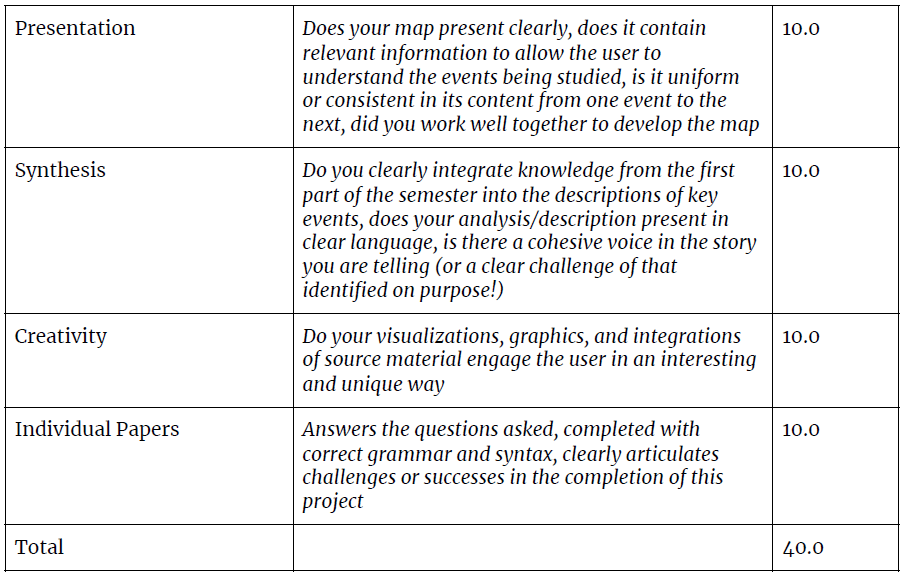Engaging with Monterey Country LGBTQ History Archive and GIS*
Lesson Plan for Humanities and Communication 359 - Law, Politics and LGBTQ History (CSUMB)
Assigned Week 12, Due Week 16
*Developed for UCLA Information Studies 422 under the Supervision of Robert Montoya, PhD, MLIS, MFA with no affiliation to CSUMB
Teaching and Learning Objectives:
Learn to utilize primary source documents in archival settings
Gain basic proficiency in GIS or similar software
Apply critical perspectives in engaging with queer history
Develop collaborative engagement skills in building your map
Assignment:
For this exercise, we will be collaborating with the instruction librarian team, and the class will be divided into groups of 4 or 5. We will be using the LGBTQ Collection of local queer newspapers from the, 70’s, 80’s, and 90’s to build an interactive map using open source GIS software. Each group will be randomly assigned a set of 3 issues to work with. From each of those 3 issues you will work as a group to populate a map of the local area with information taken from the stories in each issue (decide as a group which stories you want to focus on, at minimum there should be 2-3 per student in your group).
For this assignment you should include information about the original article or story, information or images from source material, and synthesis of concepts from our class in your brief descriptions.
At the end of this assignment I want you to each write up a 1-2 page explanation of the process you used for your portion of the assignment, how your group worked together, and how you applied concepts learned in our class.
We will be ending class 45 minutes early every week on our Friday meeting, during which time there will be a study room reserved and one of the reference librarians will be there to assist you and answer any questions you may have about the archive, data, source material or technologies you will be using.
Remember that we also have been studying Queer Theory and Critical Race Theory this semester. In your descriptions and analysis I want you to keep in mind (and identify) when you recognize that voices are not being heard and/or you think it is important to challenge the voices represented in this archive.
Description of the Archive:
33 issues of the Demeter a local feminist publication from 1978-1985 (“Demeter | creative commons, CSUMB” n.d.).
21 issues of The Paper a local LGBTQ from 1994 to 1998 (“The Paper | creative commons, CSUMB, n.d.).
Located at the CSUMB Tanimura and Antle Family Memorial Library, in the “Archives and Special Collections” Section
Guidelines for how to interact with the physical materials can be found here.
GIS:
You will be creating and using a free QGIS account. A short how-to download guide and a brief tutorial on how the system works can be found here. Please feel free to reach out to anyone at the Library Instruction Desk. So you have some examples of what your maps could look like visit this blog which provides 4 case study examples of GIS’s use.
Assessment:
Your group will be assessed based on the following criteria and remember this assignment is worth 40% of your overall grade:
References
4 historical GIS projects that you don’t know about. (2020, July 16). USC GIS Online. https://gis.usc.edu/blog/4-historical-gis-projects-that-you-dont-know-about/
Demeter: Women's news of the Monterey Bay Area | Monterey County LGBTQ history | California State University, Monterey Bay. (n.d.). Digital Commons @ CSUMB. https://digitalcommons.csumb.edu/demeter/
Library directory. (n.d.). Cal State Monterey Bay. https://csumb.edu/library/library-directory
Monterey County LGBTQ history | California State University, Monterey Bay research | Digital Commons @ CSUMB. (n.d.). Digital Commons @ CSUMB. https://digitalcommons.csumb.edu/lgbtq/
Welcome to the QGIS project! (n.d.). Welcome to the QGIS project!.https://www.qgis.org/en/site/


